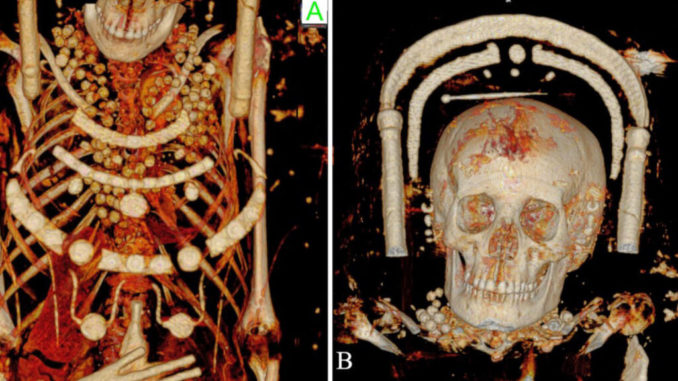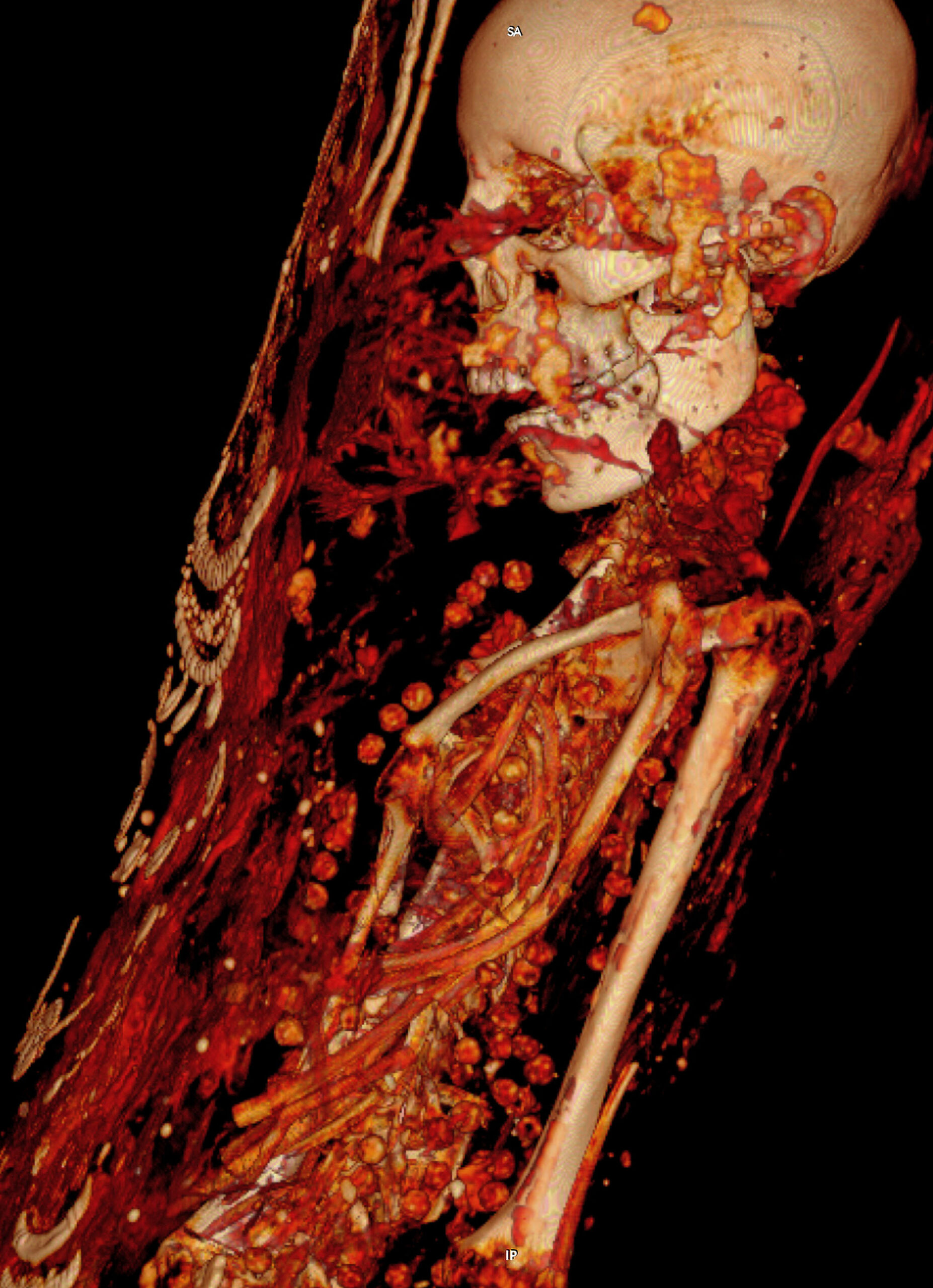
MANNHEIM, Germany — Researchers in Germany have unearthed new secrets about three Egyptian mummies using CT scans.
In studying the mummies, scientists discovered they were buried with money, jewelry and their internal organs intact. The coins are believed to be payment to the Greco-Roman ferryman Charon for transporting their souls across the River Styx. The study’s findings were released mid-November.
Stephanie Zesch, lead researcher of an international team of experts, said the three mummies found in a rock-cut tomb were unique. They are the only ones from the necropolis of Saqqara near Memphis, 15 miles south of Cairo, which are preserved intact, meaning they contain human bodies. Saqqara is noted for housing the stepped Pyramid of Djoser.
Two of the mummies were discovered in 1615 and the third in the 19th century.
The bodies were mummified in shrouds, then plastered and decorated with gold, before being painted with a full-body portrait. Shroud-wrapped bodies were usually placed in coffins or sarcophagi. This was not always the case with later mummification; instead, shrouds were ornately decorated.
The scans reveal the mummies are lying on wooden boards and female mummies wear jewelry. This indicates they “must have been part of quite a rich family,” said Zesch, a physical anthropologist and Egyptologist at the German Mummy Project at Reiss Engelhorn Museum in Mannheim.
The mummies, a man, a woman and a teenage girl, date back to the late Roman period, specifically between the 3rd and 4th centuries A.D., and their shrouds were decorated with various Greco-Roman and Egyptian symbols.
The woman is believed to have been between 30 and 40, while the teenager is pegged at 17 to 19, with a benign tumor on her spine. The man died between ages 25 and 30. Experts found multiple bone fractures when they performed the CT scan.
Zesch said that often, when these types of mummies were discovered, the body would be removed and only the shrouds would be kept. It was not unusual for mummies from the period to be buried in shrouds instead of sarcophagi. “This was the final phase of traditional mummification in Egypt,” she said.
The fact the shrouds bore symbols typically Greco-Roman, as well as Egyptian symbols, made them “quite multicultural,” Zesch said. She also noted the portraits were Greco-Roman, but other symbols, such as the Apis bull, were also present on the two female shrouds. Apis, son of primary ancient Egyptian deity Hathor, was a sacred bull worshipped in Memphis, an ancient Egyptian capital, not far from Saqqara. The shrouds reflect the local religious traditions of the time.
Zesch said the mummies, technically called stucco-shrouded portrait mummies, revealing their secrets thanks to the CT scans. X-rays had been done in the 1980s, but were limited in scope. They did not reveal all the lairs inside the shrouds. CT scans are more detailed, with a higher resolution.

Two of the mummies are currently housed in Dresden, Germany, and the third is in Egypt. The two mummies in Germany were discovered in 1615 when an Italian composer called Pietro Della Valle (1586-1652) went to Egypt and bought them from locals who had found them in Saqqara, now a World Heritage Site.
The composer took them to Rome, making them, according to the researchers, the “earliest examples of portrait mummies to have become known in Europe.” In 1728, they were acquired in the collection of Friedrich August I, Elector of Saxony, better known as “August the Strong,” which is how they ended up in Germany, according to Zesch.
The mummies were scanned ahead of a big exhibition planned in Dresden. Zesch’s team comprised three Egyptologists, two physical apologists, a radiologist, and cardiologists from the Horus group in the U.S. The American experts contributed CT data from the third mummy in Egypt.
(Edited by Fern Siegel and Matthew B. Hall)
The post Secrets of the Afterlife: CT Scans Unearth New Findings About Egyptian Mummies appeared first on Zenger News.
